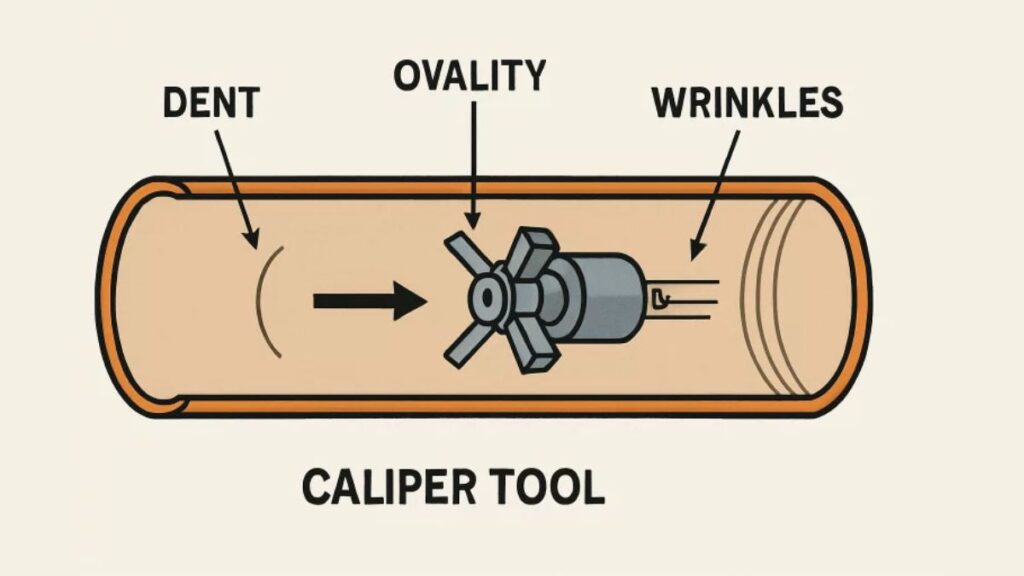Introduction to Pipeline Geometry Tools
Pipelines transporting essential resources like oil, natural gas, and water are exposed to various internal and external forces, causing deformation or material wear. Early detection is crucial for safety standards and regulatory requirements in many countries. Modern geometry tools, now standard among leading pipeline operators, provide precision data on pipeline geometry, enabling early identification and addressing of structural issues before they escalate into hazardous situations. Understanding the differences between pipeline caliper and comprehensive geometry tools is essential for pipeline safety and asset management. These tools can identify hidden deformations and potential failure points, help operators avoid emergency repairs, maintain regulatory compliance, and build trust with stakeholders and the public. This proactive approach reduces risk, minimizes liability, and ensures reliable resource delivery through complex pipeline networks.
Types of Geometry Tools
The reliability and effectiveness of a geometry tool during inspection depend on its design, the quality of sensors employed, and its ability to collect detailed data. The leading types of geometry tools in pipeline integrity management include caliper tools, multichannel caliper tools, and XYZ mapping tools, each playing distinct but often complementary roles in inspection programs.
Caliper Tools
Caliper tools are trusted and widely used due to their simple yet powerful design. They use spring-loaded mechanical arms or electronic sensors to measure and record internal diameter variations, detecting dents, expansions, contractions, and geometric distortion. Operators use caliper data for initial inspections and periodic assessments, especially in segments prone to third-party impacts or geological disturbances. Real-time feedback aids in rapid maintenance decision-making.
Multichannel Caliper Tools
Multichannel caliper tools use sensors to provide a more detailed three-dimensional view of pipeline interiors. This design captures large deformations and subtle changes, indicating early-stage fatigue or potential threats. The data collected aids in accurately modeling pipeline stress distribution, enabling asset operators to plan maintenance, extend pipeline life, and allocate budgets for critical repairs.
XYZ Mapping Tools
XYZ mapping tools are advanced geometry inspection systems that use gyroscopes, accelerometers, and magnetometers to track pipeline rotation and displacement. They provide a three-dimensional map of the entire pipeline route, allowing engineers to relate changes in shape to environmental forces. This data is crucial for asset management and regulatory reporting. Advanced inspection routines often combine XYZ data with caliper measurements for thorough deformation detection and evaluation.
Detection of Critical Deformations
Pipelines are vulnerable to various types of deformations, each with unique physical manifestations and associated risks. Dents, ovalities, and wrinkles are common types of deformations. Early identification allows for targeted repairs, reinforcement sleeves, and operating pressure adjustments. Regular geometry inspections track these changes, enabling preventive maintenance before failure. Wrinkles and buckles, caused by axial compression or rapid temperature fluctuations, can develop in seismically unstable areas. Comprehensive geometry inspections detect wrinkles early, reducing the risk of buckling and uncontrolled releases.
Technological Advancements in Geometry Inspection
Advanced sensor technologies and data analytics have significantly improved pipeline geometry inspection. Light Detection and Ranging (LiDAR) is a revolutionary development that provides unparalleled resolution and data density in pipeline geometry inspection. LiDAR-based tools scan and map the entire inner circumference of the pipeline, revealing even the smallest anomalies. This level of detail allows for more accurate assessments of defects like dents and corrosion pitting. Integrating digital twin technologies and machine learning further enhances the interpretation of inspection data, reducing human error and enabling data-driven maintenance schedules.
Importance of Regular Inspections
Geometry inspections are crucial for pipeline management, allowing operators to identify and address incremental changes. Regular inspections prevent small issues from becoming large problems and support predictive maintenance practices. Geometry inspection technology also helps companies build a rich historical dataset, allowing operators to spot trends related to seasonal changes, operational practices, or long-term environmental effects. This aligns inspection data with operational data, optimizing pipeline performance, maintaining regulatory compliance, and demonstrating environmental stewardship. The ability to reference and analyze this archive over multiple inspection cycles is essential for audits, reporting requirements, and infrastructure modernization.
Conclusion
As pipelines age and serve critical energy and water distribution roles, robust inspection strategies are essential. Geometry tools, including calipers and advanced LiDAR and XYZ mapping technologies, are crucial for modern pipeline deformation detection. By integrating these tools with routine inspection, operators can ensure safety, minimize emergencies, and maintain the value of infrastructure assets for future generations.






